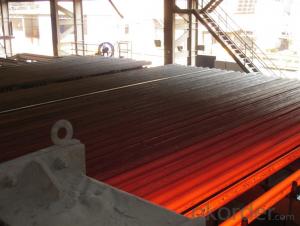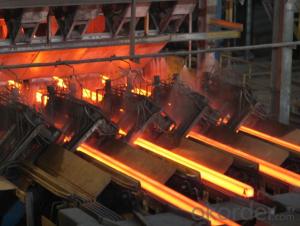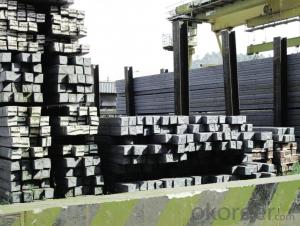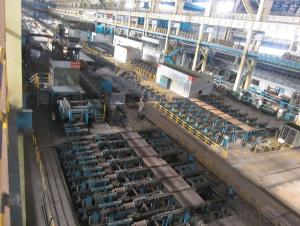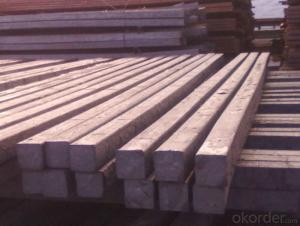Prime quality prepainted galvanized steel 665mm
- Loading Port:
- Tianjin
- Payment Terms:
- TT OR LC
- Min Order Qty:
- 100 m.t.
- Supply Capability:
- 10000 m.t./month
OKorder Service Pledge
OKorder Financial Service
You Might Also Like
Construction building material galvanized color prepainted cold
rolled steel coil
Prepainted steel sheet is coated with organic layer, which provides higher anti-corrosion property and
a longer lifespan than that of galvanized steel sheets.
The base metals for prepainted steel sheet consist of cold-rolled, HDG electro-galvanized and hot-dip
Alu-zinc coated. The finish coats of prepainted steel sheets can be classified into groups as follows:
polyester, silicon modified polyesters, polyvinylidene fluoride, high-durability polyester, etc
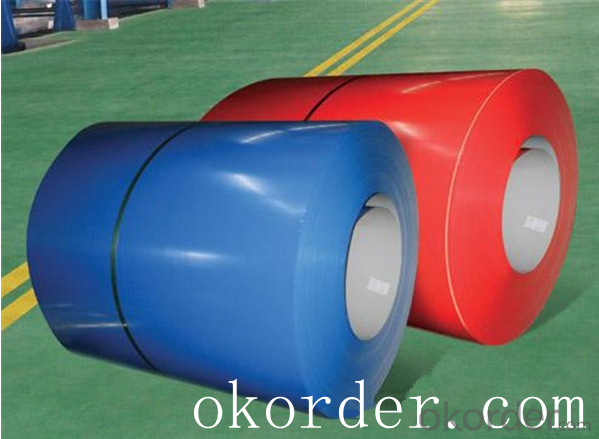
Standard and Grade :
Pre-paint galvanized steel coil | ||||
ASTM A755M-03 | EN10169:2006 | JISG 3312-2012 | ||
Commercial quality | CS | DX51D+Z | CGCC | |
Structure steel | SS GRADE 230 | S220GD+Z | CGC340 | |
SS GRADE 255 | S250GD+Z | CGC400 | ||
SS GRADE 275 | S280GD+Z | CGC440 | ||
SS GRADE 340 | S320GD+Z | CGC490 | ||
SS GRADE550 | S350GD+Z | CGC570 | ||
S550GD+Z | ||||
Application:
Outdoor | Roof, roof structure, surface sheet of balcony, frame of window, door of garage, rolled shutter door, booth, Persian blinds, cabana, etc |
Indoor | Door, isolater, frame of door, light steel structure of house, home electronic appliances, ect. |
Specifications
Commodity Name: Prepainted Galvanized Steel Coil
Standard: AISI, ASTM, DIN, GB, JIS
Grade: TDC52D+Z
Thickness 0.13-8.0mm
Width:600mm-1350mm
Zinc Coating:275g/m2
Polyester Coating Thickness:Top and Back coating thickness depend by Buyer Requirement.
Polyester Coating Type:2/2,1/2m,1/2.
Polyester Type: Polyester, silicone modified polyester, high durability polyester (HDP), polyvinylidene fluoride (PVDF)
Unit Roll Weight:5-20tons
Place of Origin Shanghai , China (Mainland)
Surface Treatment :Color Coated
Manufacture Progress:HRC-CRC-GALVANIZED-COLOR COATED
Application : Construction, electrical, transportation, steel plant, composite board plant, steel tile factory
Payment & Shipping Terms:T/T ,L/C, and FOB CHINA
Minimum Order Quantity: 25Tons
Packge Type: Moisture-proof paper inner,Steel outside,Bundle by steel rope.
Package in Container : Wood as a foot pad, wire rope reinforcement,PPGI steel coil tied together by steel rope.
- Q:Charcoal classification
- Hard charcoal. By hardwood such as Fagaceae Quercus, Castanopsis trees, secondary birch and etc..Broad-leaved charcoal. Charcoal made from a mixture of hard and soft hardwood.Pine charcoal. Carbon fired from pine or other needle wood. In addition to bamboo and bamboo charcoal burning with shells, stones (coconut shell, peach stone charcoal etc.) wood raw material firing. Charcoal collected from household stoves in the cell known as carbon. If the charcoal is crushed and mixed with proper adhesive, and then pressed, formed and roasted, the deposit is made. According to the burning process of silica and carbon black.
- Q:How are steel billets labeled for identification purposes?
- Steel billets are labeled for identification purposes using a combination of alphanumeric codes and markings. These labels provide crucial information about the steel billet's composition, size, and other important details. The most common method of labeling steel billets involves stamping or engraving the required information directly onto the surface of the billet. This can include details such as the grade of steel, heat number, lot number, and the manufacturer's symbol or logo. These markings are typically made using industrial-grade ink or through a process called electrochemical etching, which ensures durability and legibility even in harsh environments. Additionally, steel billets may also have identification tags or labels attached to them, providing further information that cannot be easily engraved or stamped. These tags or labels may include barcodes, QR codes, or RFID tags, which can be scanned or read using specialized equipment to quickly access the relevant information. By using these labeling methods, steel billets can be easily identified, tracked, and traced throughout their lifecycle, ensuring quality control, inventory management, and efficient production processes in the steel industry.
- Q:How are steel billets used in the manufacturing of valves and pumps?
- Steel billets are used in the manufacturing of valves and pumps as the raw material for shaping and forming the critical components of these mechanical devices. These billets are heated, forged, and machined to create the necessary shapes and sizes required for valves and pumps. The resulting components, such as valve bodies, stems, and pump casings, exhibit high strength, durability, and resistance to corrosion, making them suitable for withstanding the demanding conditions of fluid control and transportation in various industries.
- Q:What are the different methods of steel billet surface treatment?
- There are several methods of steel billet surface treatment, including pickling, shot blasting, grinding, and coating. Pickling involves immersing the billet in an acid solution to remove impurities and create a clean surface. Shot blasting uses high-speed particles to remove rust and mill scale from the surface. Grinding is a mechanical process that smoothens the surface through abrasion. Coating is another method where a protective layer is applied to prevent corrosion and enhance the appearance of the billet.
- Q:How are steel billets cut into desired lengths?
- Steel billets are commonly cut into desired lengths using various cutting techniques. One of the most commonly used methods is saw cutting. In this process, a high-speed circular saw equipped with a carbide or diamond-tipped blade is used to cut through the steel billet. The billet is securely clamped in place, and the saw blade is brought down onto the billet, slicing through it to create the desired length. Another method used is torch cutting, which involves the use of an oxy-fuel torch. The torch produces a high-temperature flame that is directed onto the billet, melting and cutting through the steel. Torch cutting is often used for larger and thicker steel billets, as it allows for more flexibility in cutting irregular shapes or angles. Additionally, plasma cutting is another technique employed for cutting steel billets. Plasma cutting involves the use of a plasma torch that generates an electrically conductive plasma arc. This arc melts the steel and blows away the molten metal, resulting in a precise and clean cut. Plasma cutting is particularly useful for cutting through thicker steel billets or for intricate shapes and designs. Overall, the cutting technique used to cut steel billets into desired lengths depends on factors such as the size and thickness of the billet, the desired precision and accuracy, and the specific requirements of the end product.
- Q:How are steel billets used in the manufacturing of marine components?
- Steel billets are an essential raw material used in the manufacturing of marine components due to their strength, durability, and versatility. Steel billets are essentially semi-finished steel products that are cast into a specific shape, usually a square or a rectangle, through a process called continuous casting. These billets then serve as the starting point for various marine components. One of the main ways steel billets are used in the manufacturing of marine components is through the process of hot rolling. Hot rolling involves heating the steel billet to high temperatures and then passing it between a series of rollers to shape it into the desired form. This can include forming the billet into rods, bars, beams, or other structural shapes that are commonly used in marine applications. Steel billets are also used in the manufacturing of marine components through the process of forging. Forging involves heating the billet to high temperatures and then applying pressure to shape it into the desired form. This process is commonly used to manufacture marine components such as propeller shafts, crankshafts, and other high-strength parts that require precise shaping and superior mechanical properties. Additionally, steel billets can be used in the manufacturing of marine components through the process of machining. Machining involves removing material from the billet using various cutting tools to create complex shapes and features. This process is commonly used to manufacture marine components such as valves, fittings, and other precision parts that require tight tolerances and intricate designs. In summary, steel billets play a crucial role in the manufacturing of marine components. Their strength, durability, and versatility make them an ideal raw material for producing various marine parts through processes such as hot rolling, forging, and machining. By using steel billets, manufacturers can ensure that the marine components they produce are capable of withstanding the harsh conditions and demanding requirements of the marine environment.
- Q:How are steel billets used in the manufacturing of pumps and compressors?
- Pumps and compressors rely heavily on steel billets, a crucial raw material for their manufacturing process. These semi-finished steel forms are transformed into different components and parts of these devices. To prepare steel billets for shaping, the initial step involves heating them to a high temperature to make them malleable. Once heated, the billets go through various metalworking techniques like forging, rolling, or extrusion. By subjecting them to these processes, the billets are converted into the desired shapes and sizes required for specific pump and compressor components. In pump manufacturing, steel billets are utilized to fabricate impellers, responsible for fluid movement and circulation. The billets are shaped according to the impeller design through machining or casting procedures. Similarly, for compressors, steel billets are used to create vital components like cylinders, pistons, and connecting rods, which facilitate gas compression and movement. The preference for steel billets in pump and compressor manufacturing stems from their advantageous properties, such as strength, durability, and corrosion resistance. These properties are vital for ensuring the efficiency and longevity of these mechanical devices, especially when they operate under high pressures, temperatures, and harsh working conditions. In conclusion, steel billets play a fundamental role in the manufacturing process of pumps and compressors. They provide the necessary raw material for shaping and creating various components that enable these devices to function effectively.
- Q:Are steel billets used in the manufacturing of tools?
- Yes, steel billets are commonly used in the manufacturing of tools. Steel billets are semi-finished steel products that are typically hot-rolled or forged into various shapes, including bars, rods, and sheets. These billets serve as the primary raw material in tool manufacturing, as they provide the necessary strength, durability, and machinability required for producing high-quality tools. By shaping and machining the steel billets, manufacturers can create a wide range of tools such as wrenches, hammers, screwdrivers, drill bits, and cutting tools. The use of steel billets ensures that these tools possess the necessary hardness, toughness, and resistance to wear and tear, making them reliable and long-lasting. Therefore, steel billets play a crucial role in the production of tools, contributing to the overall efficiency and functionality of various industries.
- Q:How are steel billets used in the manufacturing of industrial pumps?
- Industrial pumps rely on steel billets as a primary material for the production of different pump components. These billets, typically made of high-quality steel, serve as the initial raw material for forging or casting processes. To begin with, pump casings are produced using steel billets. The billets are shaped through forging or casting techniques to form the outer shell of the pump. This casing ensures structural integrity and contains the fluid being pumped. Moreover, steel billets are employed in the manufacturing of impellers, which play a crucial role in industrial pumps. Impellers are responsible for generating the force required to move the fluid through the pump. The billets undergo machining, shaping, and polishing to achieve the intricate design of the impeller, ensuring optimal fluid flow and efficiency. Additionally, steel billets are utilized in the production of shafts and other critical pump components. These components must possess high strength and durability to endure the demanding conditions of industrial applications. By utilizing steel billets, manufacturers can guarantee the necessary mechanical properties, such as resistance to corrosion, wear, and high temperatures. In conclusion, steel billets hold immense significance in the manufacturing of industrial pumps. They serve as the initial material for various pump components, including casings, impellers, shafts, and more. By utilizing high-quality steel billets, manufacturers can create durable and efficient pumps that meet the rigorous requirements of industrial applications.
- Q:What are the different types of defects that can occur in steel billets?
- Steel billets can have various types of defects, which may arise during manufacturing or due to external factors. Common defects are as follows: 1. Surface defects: Scratches, pits, scabs, scale, and cracks can be found on the outer surface of the billet. These defects occur because of mishandling, improper cooling, or contamination during manufacturing. 2. Internal defects: Voids, porosity, inclusions, and segregation are defects that exist within the billet body and are not visible on the surface. They occur due to improper solidification, incorrect casting, or impurities in the steel. 3. Dimensional defects: When the billet fails to meet the desired dimensions or tolerances, dimensional defects arise. These defects include variations in length, width, thickness, or straightness. Improper rolling, uneven cooling, or equipment misalignment can cause such defects. 4. Mechanical defects: The mechanical properties of the steel billet are affected by these defects. They can include improper grain structure, low hardness, brittleness, or poor toughness. Mechanical defects occur due to improper heat treatment, incorrect alloy composition, or inadequate rolling processes. 5. Weld defects: For welded billets, defects related to the welding process can occur. Lack of fusion, incomplete penetration, porosity, or cracks in the weld zone are common weld defects. Improper welding parameters, inadequate preparation, or contamination during the welding process can cause such defects. To ensure the quality and integrity of steel billets, it is crucial to detect and address these defects. Various inspection techniques, such as visual inspection, ultrasonic testing, magnetic particle testing, or radiographic testing, can be employed to identify and classify these defects.
1. Manufacturer Overview |
|
|---|---|
| Location | |
| Year Established | |
| Annual Output Value | |
| Main Markets | |
| Company Certifications | |
2. Manufacturer Certificates |
|
|---|---|
| a) Certification Name | |
| Range | |
| Reference | |
| Validity Period | |
3. Manufacturer Capability |
|
|---|---|
| a)Trade Capacity | |
| Nearest Port | |
| Export Percentage | |
| No.of Employees in Trade Department | |
| Language Spoken: | |
| b)Factory Information | |
| Factory Size: | |
| No. of Production Lines | |
| Contract Manufacturing | |
| Product Price Range | |
Send your message to us
Prime quality prepainted galvanized steel 665mm
- Loading Port:
- Tianjin
- Payment Terms:
- TT OR LC
- Min Order Qty:
- 100 m.t.
- Supply Capability:
- 10000 m.t./month
OKorder Service Pledge
OKorder Financial Service
Similar products
New products
Hot products
Related keywords
